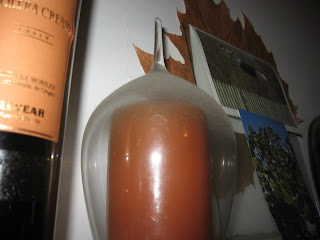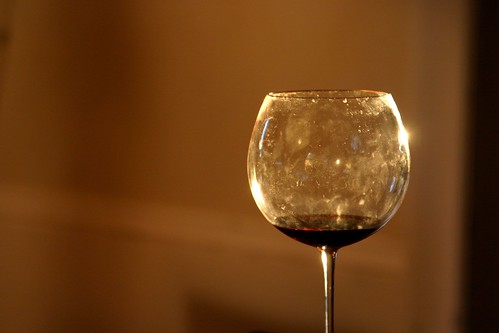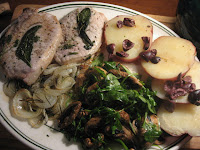




Three things you ought to know about Muscadets: they are a style of white wine made in the Atlantic Loire region and not the name of a grape variety; they are never allowed to be more than 12% alc./vol; they are at their best when designated as a "Muscadet-Sèvre et Maine sur lie" (and beware: since Muscadets come in all manner of packaging with bottles running a gamut of silly shapes and sizes, and even featuring mesh netting that cling to Muscadets like the wicker that encases those Old World wine jugs, pay extra attention to the label designation rather than being swayed by appearances).
And, oh yeah, they are very refreshing.
Yesterday we picnicked in the unusual 23-degree warmth, extending what seems to be an Indian Summer for Montreal. Today's high is 24 degrees and while I won't be reaching for a Muscadet (I've had my fill of them recently), I can recommend ways to separate the good from the bad should you be in the mood for this distinctive type of wine tonight.
TOP THREE MUSCADETS UNDER $15
Starting from the left, the first wine of five different bottles tasted is the most aged (and most expensive) wine. It's the Le Master de Donatien Muscadet-Sèvre et Maine Sur Lie 2003. Click on the bottle for full product details. As a special note, I've seen this item reduced in price at many SAQ locations -- in fact I don't think I've ever purchased this wine at full price!
Even at its regular retail price, I consider Donatien a good buy. Characteristic Muscadet flavours with something extra, softer, and a markedly creamy aspect to its fruit component. "Sur lie" means the wine has been aged on its lees -- a process that lets the wine's flavours deepen to an often heightened level of creaminess or savouriness. It's not always remarkable in sur lie wines, but I find it in this one. Sur lie is appropriate for a 2003 Muscadet. The 2003 vintage is about as old as you get for most retailers and "sur lie" ageing is favourable for extending the cellar life of a wine.
But what's characteristic Muscadet? Next are two names that provide useful examples. Moving in order to the right are the Château du Cléray Haute Culture Réserve Muscadet-Sèvre et Maine Sur Lie 2005 (yes Muscadet names can get quite lengthy -- I didn't even include the maker name, which is Sauvion, in the title) followed by the Chéreau Carré Muscadet-Sèvre et Maine Sur Lie 2006.
These two wines instantly place you in Muscadetland. In particular, the nose of Chéreau Carré transported me. It smells of the sea. Briny but fresh on the nose and on the palate there's wet stone and flowers with diesely tones. It's marked by a clean, crisp finish that lesser Muscadets lack.
The Château du Cléray is linear and firm, mineral and steely. It's the perfect accompaniment to oysters and fresh seafood platters. Both of these carry across the Melon de Bourgogne grape variety well (the grape of Muscadet is actually a cousin of Chardonnay). They are expressive, slightly bitter but not sour, and fairly complex, perhaps because of each one's commitment to bottle their wine after ageing on lees.
TASTING BANANAS
Unfortunately, something went awry for Château du Cléray Haute Culture Réserve Muscadet-Sèvre et Maine Sur Lie 2006, the current vintage. It delivers a strong tinge of banana when you drink it. The 2005, if you can still find it on store shelves, is much better. The 2007s won't appear to replace the 2006s until next spring, at the earliest.
At first I thought the banana aroma would eventually waft away and was just a lingering remnant of the lees. I waited to see if it would blow off with some time. It didn't. Even tasting it against the 2005 on the following night, I could still isolate the 2006 as the banana notes were quite still pronounced. I had brought the 2006 back out of the fridge for tasting and uncorked the 2005 version, poured them both and then went at them blind to keep me honest. Verdict: I only got banana off one and it was revealed as the 2006.
To me, this determined a few things. My palate wasn't just acting up on a particular evening, but also that the a banana aroma is not a sulphuric attribute of the wine that can lift away. Also, favouring the 2005 lends credence to the idea that some Muscadets, especially when made "sur lie," are drunk much quicker than they need to be.
But where does the so-called banana aroma come from? This reminded me of what Eric Asimov wrote recently, equally as inconclusive, on the topic of Beaujolais:
...It was the product of a selected yeast, the notorious 71B, that was widely used in the heyday of Beaujolais nouveau's popularity. But some vignerons say the banana smell comes from carbonic maceration rather than a particular strain of yeast. And one told me it was simply a characteristic of the gamay grape regardless of the yeast used. I don't smell it very often, but it's striking when I do notice it.
HITTING ROCK'S BOTTOM
Finally, last, and in this case, least is the
Remy Pannier Muscadet-Sèvre et Maine 2006. I bought this wine because I thought it was sur lie. Was I losing my mind? Click on this bottle image to see that this bottle is listed as a "sur lie" at the SAQ.
I suppose I wouldn't care that this wine is not made on its lees had it been any good. Is wasn't. It lacked the freshness and the typical refreshing attack. No stony grip, no mineral sparkle. Was it oxidized? I am taking this one back to where I bought it for an explanation because it really isn't up to snuff. But maybe there is more to this story. [There is:
my updated investigation and tasting notes are now up.]
Until I get to the bottom of this, check out these
tasting notes for Remy Pannier Muscadet that I found online. These notes are what is written on the back label of the 2006 bottle, verbatim!
It turns out that the owner of the above wineblog is a professional tasting writer. Neat! Even though she wrote about the 2003 vintage (which by the way doesn't exactly sound like a knock-your-socks-off bottle either based on her rating system) the legacy lives on for the successive vintages. Immortalized wino!
Donatien Bahuaud, La Chapelle-Heulin; La Seigneurie du Cléray - Sauvion, "Éolie," Vallet; Bernard Chéreau, Chasseloir, Saint-Fiacre | Loire-Atlantique, France. 12%.
(Full details on the Remy Pannier to come next...)











































.JPG)







